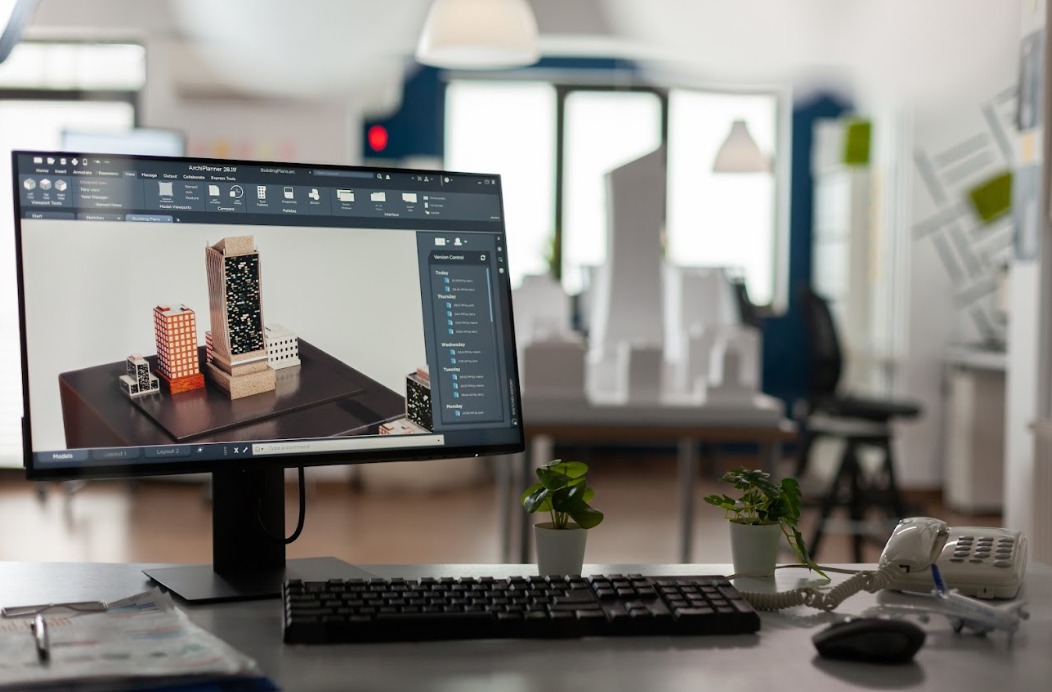3D rendering software and animation have redefined how professionals across industries translate ideas into compelling, lifelike visuals. From architectural previews and virtual prototypes to immersive marketing content, 3D rendering provides a versatile and powerful toolkit for visualization and communication.
What is 3D Rendering?
3D rendering is the process of producing 2D images or animations from 3D digital models using specialized software. These visuals can range from stylized designs to highly photorealistic representations. The process involves several stages: modeling, texturing, lighting, and calculating shadows and reflections; each contributing to a final visual product. Rendering can be performed in real-time for interactive applications or processed in batches for high-quality static images.
Types of 3D Rendering Techniques
Different rendering techniques serve various project goals:
- Ray Tracing: Offers high realism by simulating real-world lighting; resource-intensive.
- Radiosity: Provides soft, global illumination; suitable for architectural visuals.
- Rasterization: Fast conversion of 3D to 2D; commonly used in real-time applications.
- Real-Time Rendering: Enables live interaction, critical for gaming and AR/VR.
- Non-Photorealistic Rendering: Used for stylized or illustrative visuals.
- Shading Techniques: Includes wireframe, flat, Gouraud, and Phong shading to achieve varying degrees of realism and artistic control.
Industries Leveraging 3D Rendering
The adaptability of 3D rendering makes it valuable across sectors:
- Architecture & Construction: Enables clear visualization of spaces and structures.
- Product Design & Manufacturing: Facilitates rapid prototyping and design validation.
- Advertising & Marketing: Creates high-impact visuals without the need for physical setups.
- Movies & Entertainment: Powers visual effects and character animation.
- Interior Design: Previews layouts, materials, and lighting setups.
- Medical & Scientific Visualization: Renders complex biological and chemical models.
- Education: Brings abstract or technical concepts to life through interactive models.
Business Benefits of 3D Rendering
For businesses, 3D rendering offers strategic advantages:
- Time Savings: Rapid iterations reduce design cycles.
- Cost Efficiency: Cuts costs associated with physical prototypes or photo shoots.
- Enhanced Marketing: Delivers attention-grabbing visuals that improve engagement.
- Competitive Edge: Strengthens brand identity through high-quality digital assets.
- Client Communication: Improves understanding with immersive presentations.
Practical Use Cases of 3D Rendering
Across industries, 3D rendering drives innovation:
- Automotive: Virtual prototyping and in-cabin simulations.
- Ecommerce: 360° product views and customization features.
- Virtual Try-On: Allows consumers to preview apparel, accessories, or makeup.
- Industrial Design: Models and tests tools or machinery pre-production.
- Architectural Visualization: Showcases design intent before construction.
- Medical Applications: Renders anatomical and molecular structures.
- Education: Supports interactive learning with detailed 3D content.
3D Rendering vs. 3D Modeling
While closely related, 3D rendering and modeling serve distinct functions. Modeling involves building the structure and form of an object in a digital space. Rendering, by contrast, converts that model into a final image or animation, incorporating lighting, textures, and environmental effects. Both are essential for creating accurate and engaging visual outputs.Rendering can be performed in real-time for interactive applications or processed in batches for high-quality static images.
Create your masterpiece and get rendering today!
3D rendering software and animation are transforming visual communication across industries. By turning digital models into vivid, high-quality visuals, they empower businesses to innovate, market effectively, and streamline design workflows. Whether you’re in architecture, Ecommerce, or education, leveraging 3D rendering is a strategic move toward clarity, creativity, and efficiency.



































